Birds of prey, also known as raptors, are some of the most captivating creatures in the animal kingdom. With their sharp talons, powerful beaks, and keen eyesight, these birds are masterful hunters, dominating the skies with grace and precision. From the majestic eagles soaring high above mountain ranges to the swift falcons diving at incredible speeds, each species of bird of prey possesses unique characteristics that make them truly remarkable. In this article, we explore the top 16 most stunning birds of prey found in the wild, showcasing their beauty, strength, and the vital roles they play in maintaining the balance of nature.
Harpy Eagle
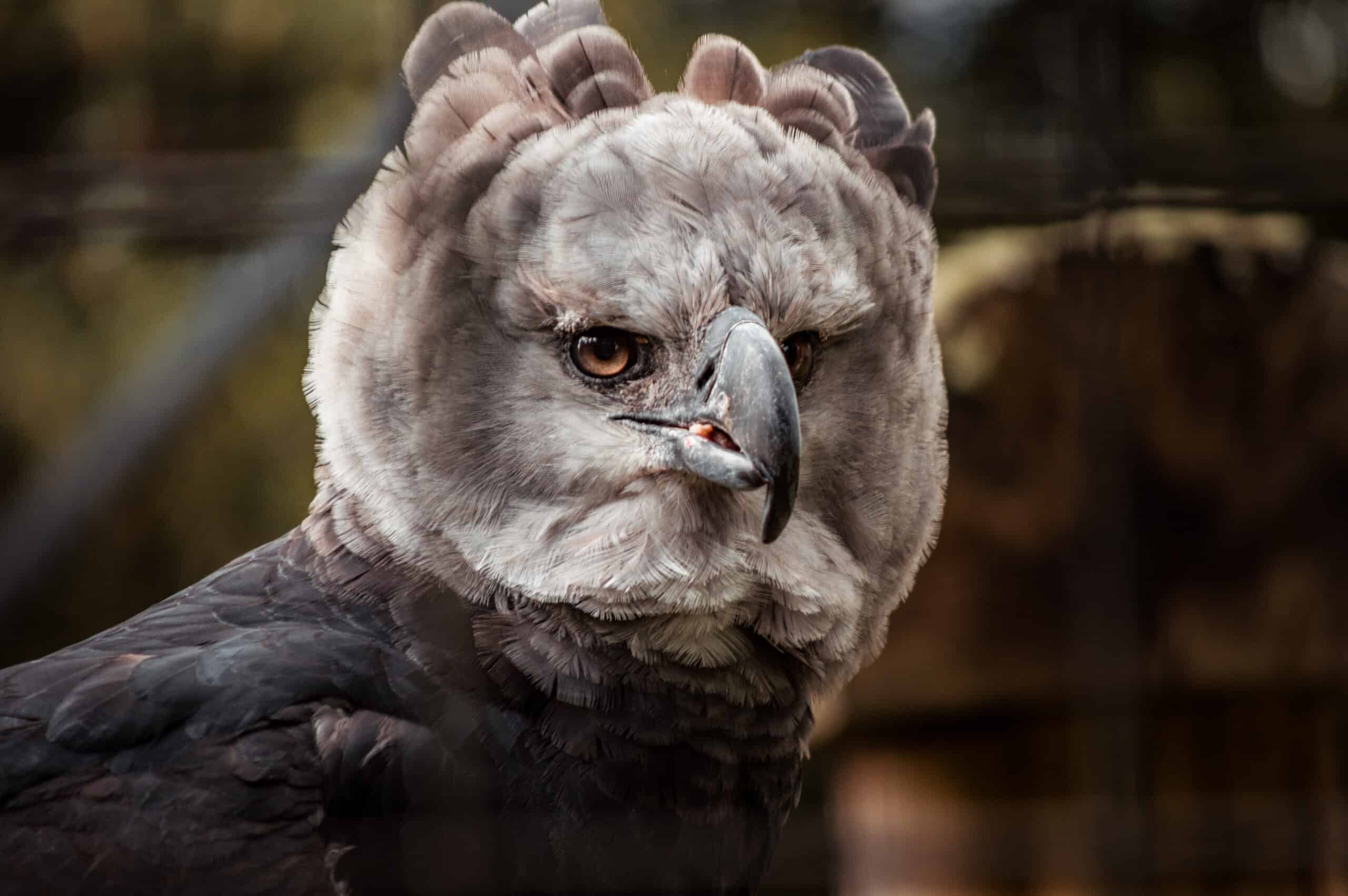
The Harpy Eagle is often regarded as the most powerful eagle in the world, and its stunning appearance only adds to its formidable reputation. Native to the rainforests of Central and South America, this majestic raptor boasts a wingspan of up to 7 feet and can weigh up to 20 pounds. What truly sets the Harpy Eagle apart is its striking plumage: a slate-gray body, white underside, and a distinctive double crest of feathers on its head that it raises when agitated or excited. Its legs are incredibly thick, supporting talons that are longer than a grizzly bear’s claws, making it a fearsome predator. Harpy Eagles are known for their incredible hunting skills, often preying on sloths, monkeys, and other arboreal mammals. Their ability to navigate through dense forest canopies with such a large wingspan is a testament to their agility and power. Despite their imposing size and strength, Harpy Eagles are elusive and rarely seen by humans, adding to their mystique and allure. Unfortunately, due to habitat destruction, they are now considered near threatened, making the sight of one in the wild even more breathtaking and rare.
Philippine Eagle
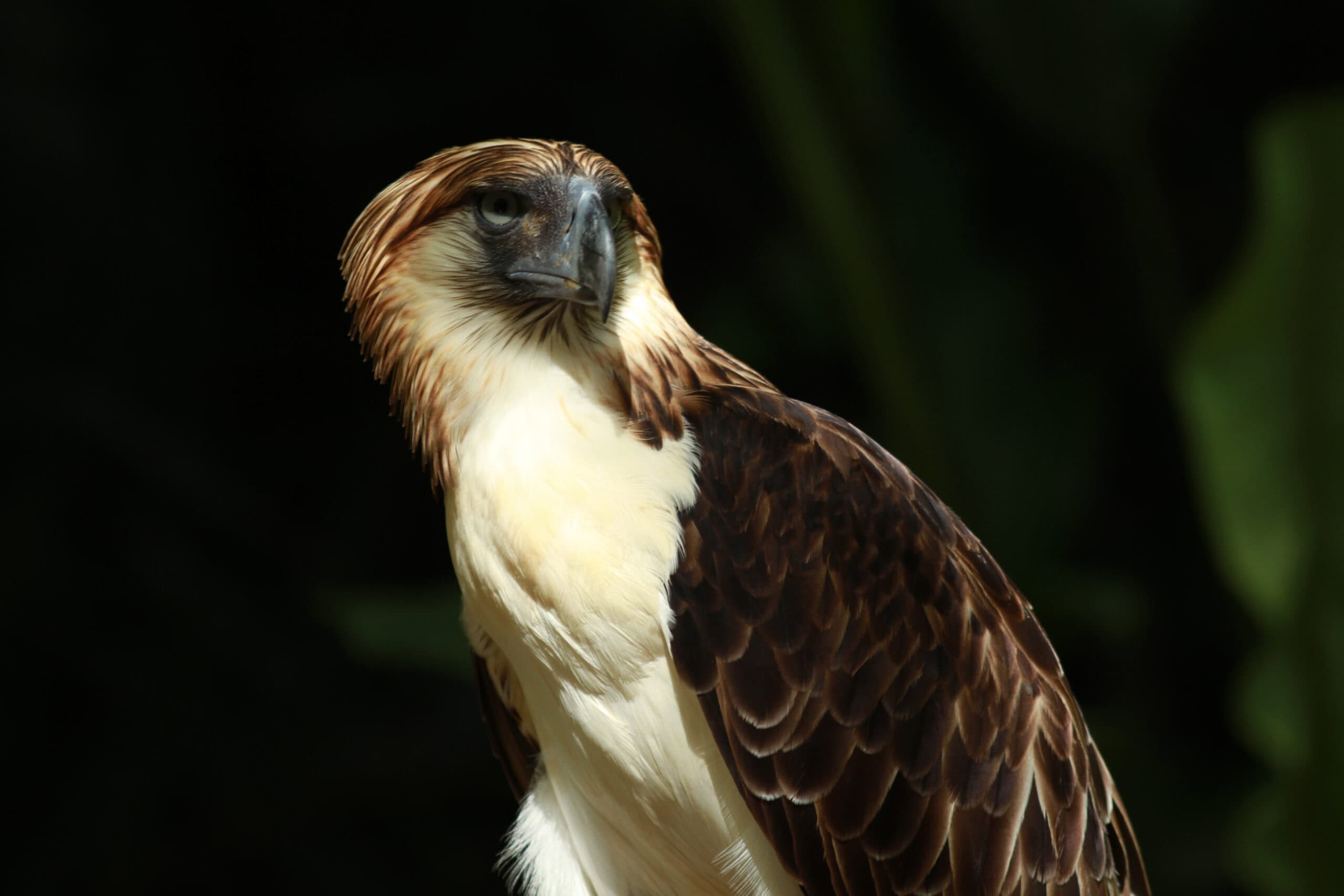
The Philippine Eagle, also known as the Monkey-eating Eagle, is one of the largest and most magnificent eagles in the world. Endemic to the Philippines, this bird of prey is renowned for its striking appearance, featuring a shaggy, cream-colored mane that frames its face, giving it a regal and intimidating look. The Philippine Eagle has a wingspan of up to 7 feet and can weigh up to 18 pounds, making it one of the largest eagles in the world. Its powerful beak and talons are perfectly adapted for hunting its preferred prey, which includes monkeys, flying lemurs, and other large mammals. The Philippine Eagle’s piercing blue eyes and fierce demeanor make it a truly awe-inspiring sight in the wild. As the national bird of the Philippines, it holds a special place in the country’s cultural heritage, symbolizing strength, resilience, and beauty. Unfortunately, the Philippine Eagle is critically endangered, with only a few hundred individuals left in the wild due to deforestation and hunting. Conservation efforts are ongoing, but seeing this majestic bird in its natural habitat is a rare and privileged experience.
Martial Eagle
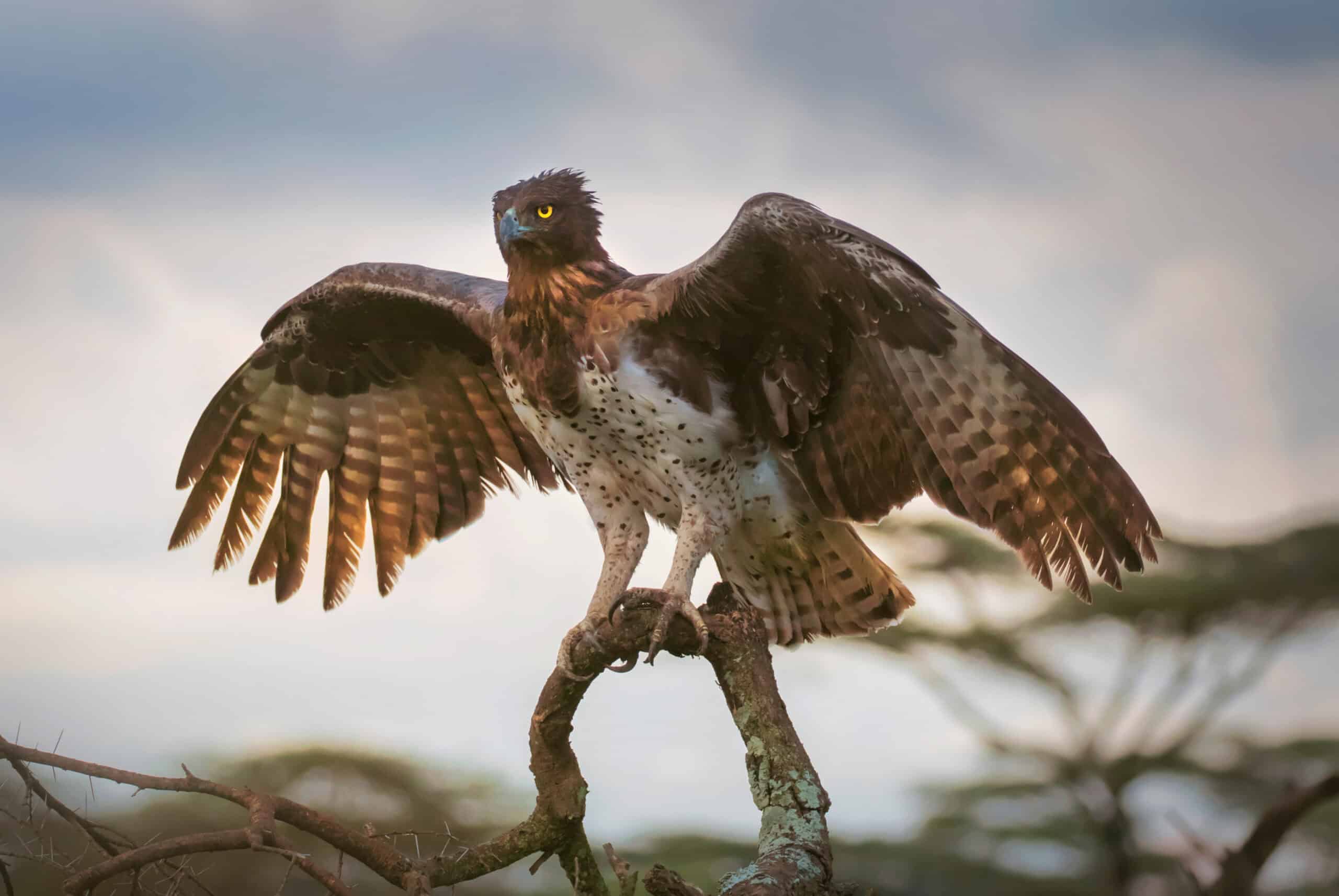
The Martial Eagle is Africa’s largest and most powerful eagle, known for its impressive size and striking appearance. With a wingspan that can reach up to 8.5 feet and a weight of up to 14 pounds, the Martial Eagle is a formidable predator, capable of taking down prey much larger than itself, including antelopes and large birds. Its plumage is equally stunning, with a dark brown upper body contrasted by a white underside speckled with dark spots. The Martial Eagle’s piercing yellow eyes and powerful beak add to its fierce look, making it one of the most awe-inspiring birds of prey in the African savannah. This eagle is known for its solitary and elusive nature, often seen soaring high in the sky, surveying its territory for potential prey. The Martial Eagle’s hunting prowess and its ability to adapt to various habitats, from savannahs to deserts, make it a truly remarkable bird of prey. However, like many raptors, the Martial Eagle faces threats from habitat loss and human persecution, making conservation efforts crucial to ensure that future generations can witness this stunning bird in the wild.
Steller’s Sea Eagle
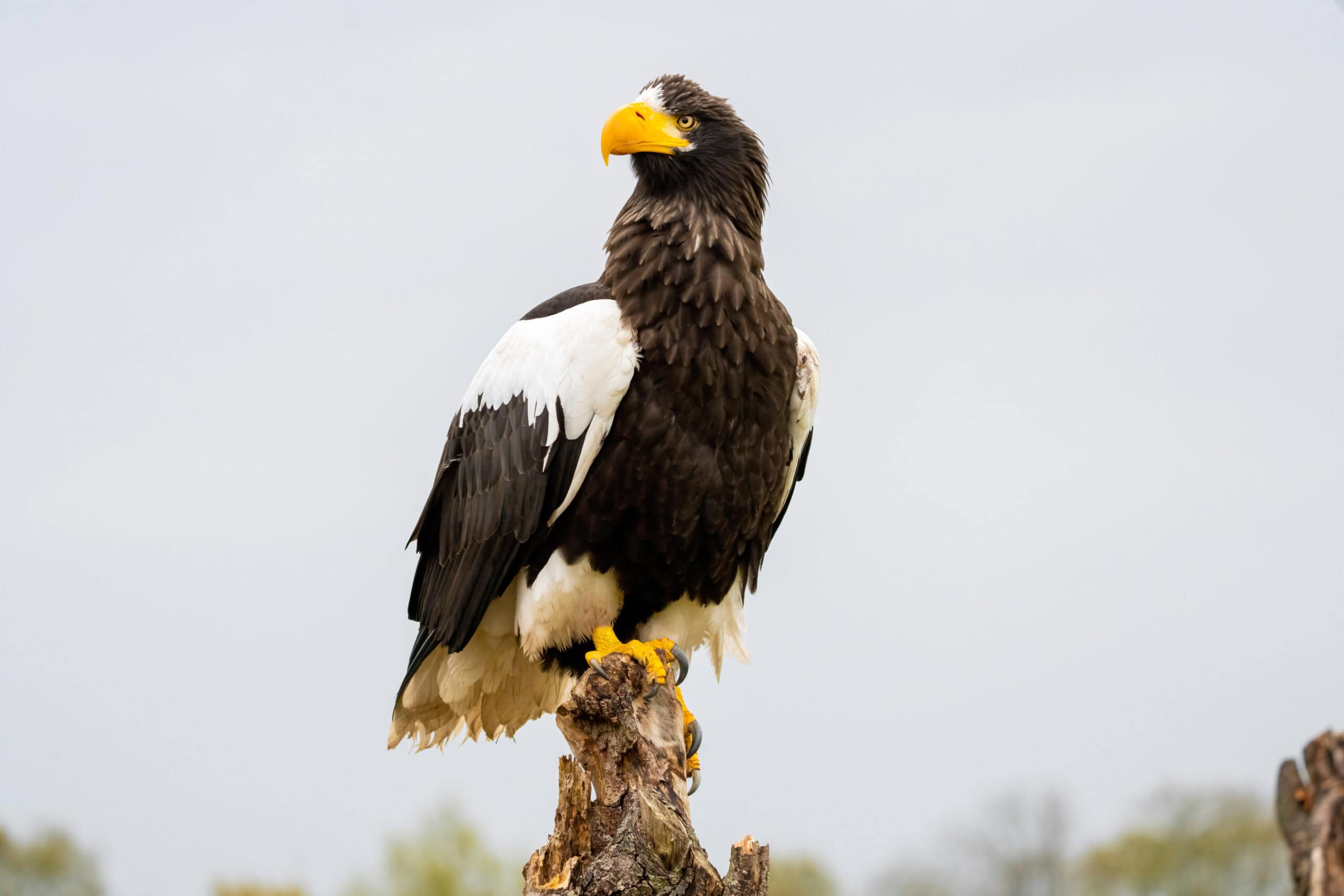
Steller’s Sea Eagle is one of the heaviest and most powerful eagles in the world, with females weighing up to 20 pounds. Native to the coastal regions of Northeast Asia, particularly around Russia and Japan, this eagle is easily recognizable by its massive yellow beak, striking white shoulders, and dark brown body. The Steller’s Sea Eagle’s impressive wingspan can reach up to 8.2 feet, allowing it to soar effortlessly over the frigid coastal waters where it hunts for fish, its primary diet. This eagle’s presence is commanding, and its sheer size and bold coloration make it one of the most stunning birds of prey in the world. Steller’s Sea Eagles are often seen perched on rocky outcrops or towering trees near the water, keeping a vigilant watch for prey. Their intense, golden eyes and powerful talons are perfectly adapted for capturing slippery fish, making them expert hunters. Despite their strength and beauty, Steller’s Sea Eagles are considered vulnerable due to habitat loss, pollution, and overfishing, which threaten their food sources. Their rarity and majestic appearance make sightings of these eagles a truly breathtaking experience.
Golden Eagle
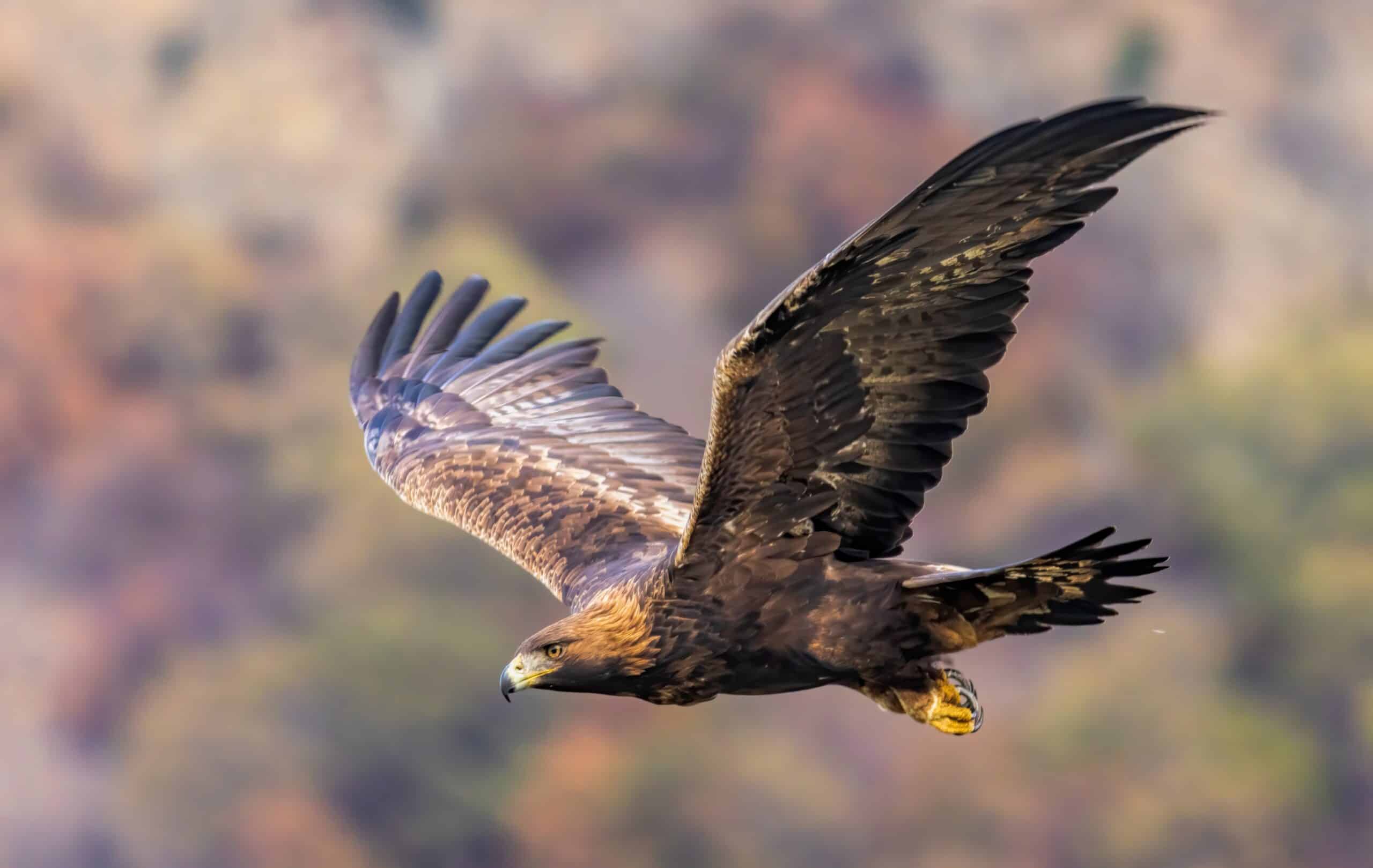
The Golden Eagle is one of the most iconic and revered birds of prey, known for its majestic appearance and incredible hunting prowess. Found across the Northern Hemisphere, from North America to Europe and Asia, the Golden Eagle is a symbol of power and freedom in many cultures. This eagle’s plumage is a rich, dark brown with golden feathers on the back of its head and neck, giving it its name. With a wingspan of up to 7.5 feet and a weight of up to 15 pounds, the Golden Eagle is a formidable predator, capable of taking down large mammals such as deer, goats, and foxes. Its keen eyesight allows it to spot prey from great distances, and its powerful talons can crush the bones of its prey with ease. The Golden Eagle is also known for its incredible speed, reaching dive speeds of up to 150 miles per hour. This combination of power, speed, and grace makes the Golden Eagle one of the most stunning and admired birds of prey in the world. Despite its widespread range, the Golden Eagle is protected in many regions to ensure its survival for future generations.
Bearded Vulture
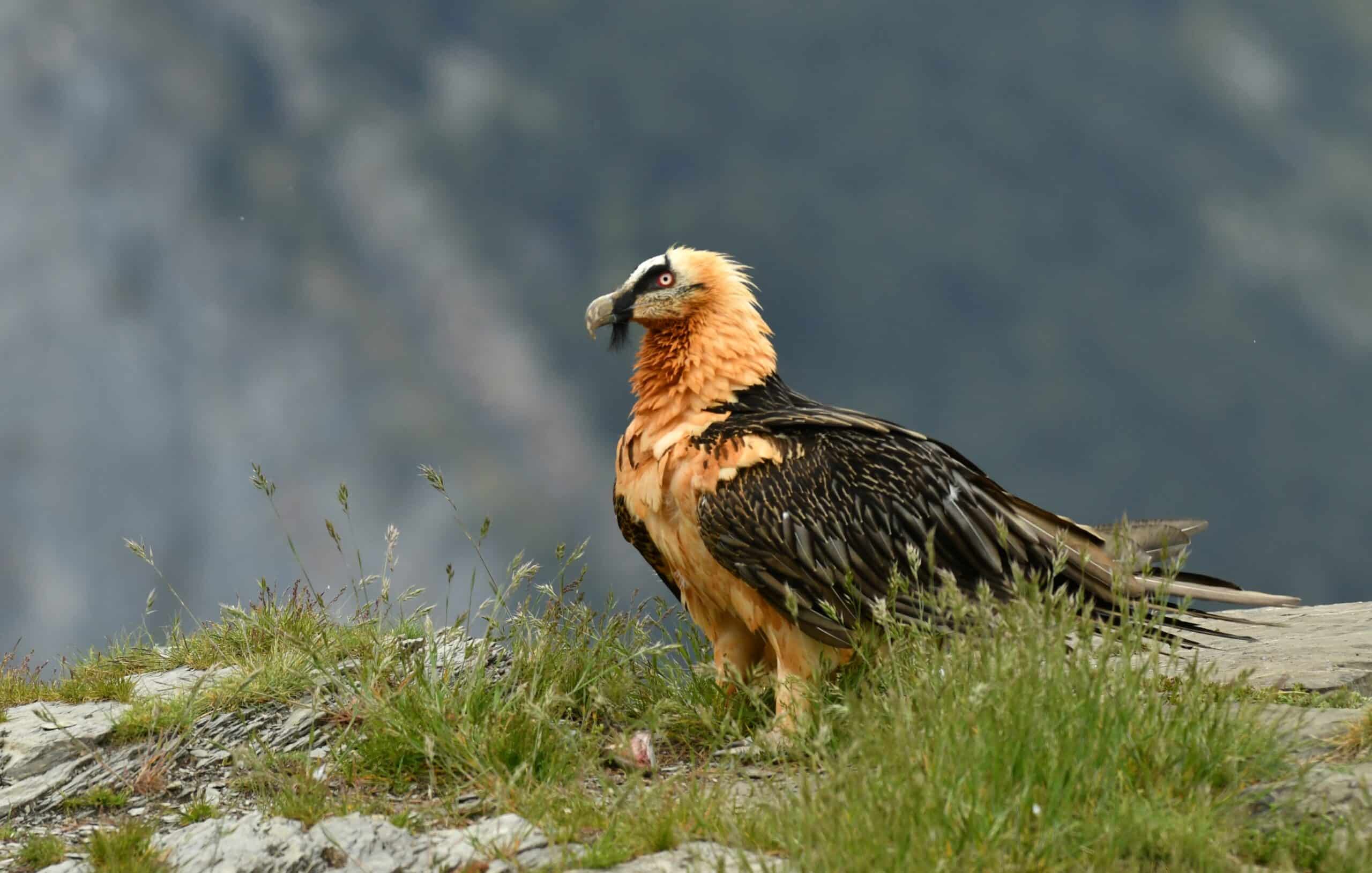
The Bearded Vulture, also known as the Lammergeier, is one of the most striking and unusual birds of prey in the world. Found in mountainous regions across Europe, Asia, and Africa, this vulture is easily recognizable by its distinctive appearance: a slender body covered in rusty orange and black plumage, a beard-like tuft of feathers under its chin, and piercing red eyes. The Bearded Vulture has a wingspan of up to 9.5 feet, making it one of the largest raptors in the world. Unlike other vultures, which primarily feed on carrion, the Bearded Vulture has a unique diet—bones. It is one of the few animals in the world that can digest bone marrow, which it obtains by dropping large bones from great heights onto rocks to shatter them. This behavior, along with its eerie appearance, has made the Bearded Vulture the subject of many myths and legends. Despite its fearsome reputation, the Bearded Vulture is a highly specialized and important scavenger in its ecosystem, helping to clean up animal remains. However, it is also one of the most endangered vultures, facing threats from habitat loss, poisoning, and human persecution.
Andean Condor
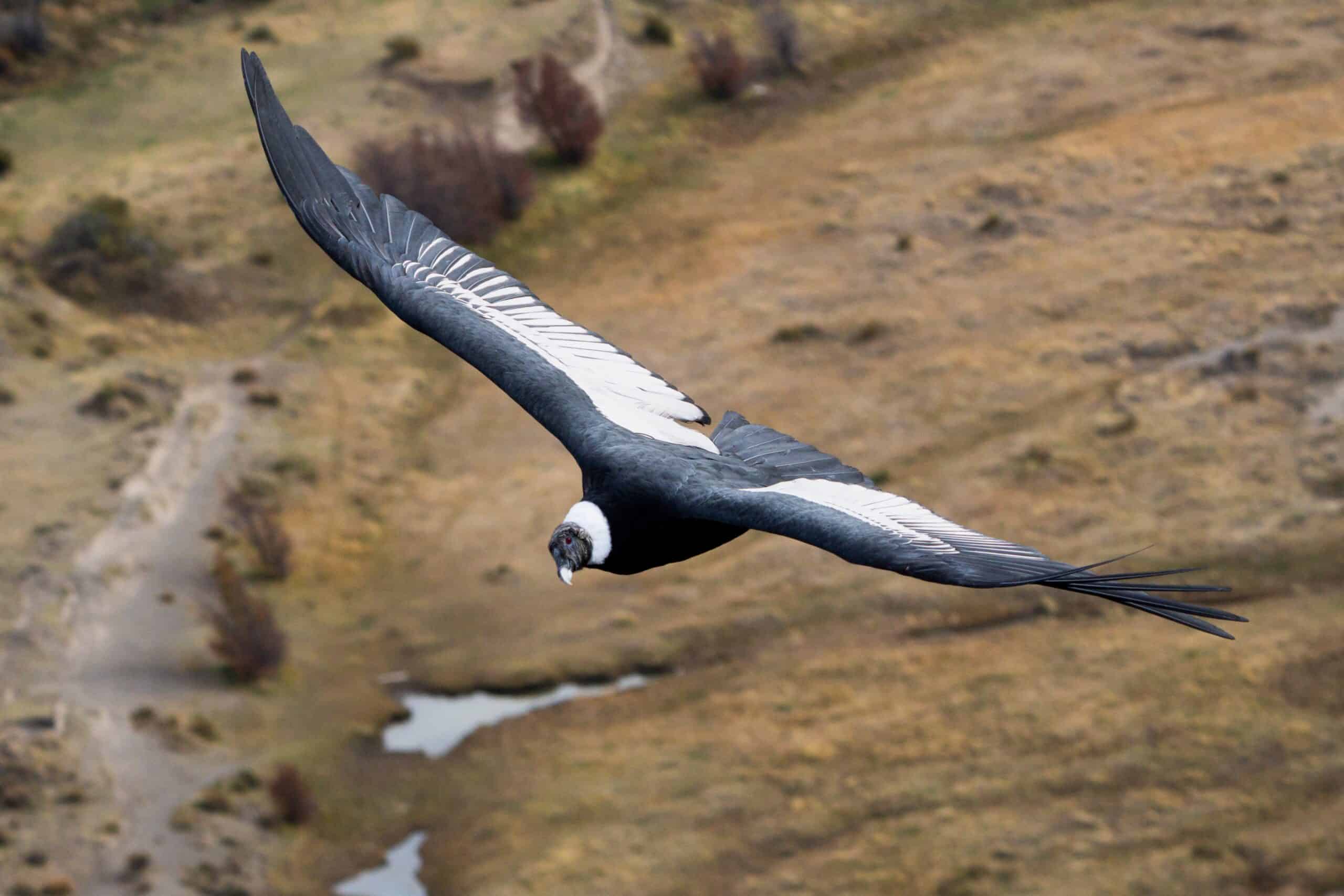
The Andean Condor is one of the largest flying birds in the world, with an impressive wingspan that can reach up to 10.5 feet. Native to the Andes Mountains and the Pacific coast of South America, this magnificent bird is a symbol of power and freedom in Andean cultures. The Andean Condor’s black plumage is contrasted by a striking white ruff around its neck and white patches on its wings. Its bald head, which is adapted for scavenging, can change color depending on the bird’s emotional state, ranging from red to yellow. Despite its size, the Andean Condor is an adept flier, using thermal currents to soar effortlessly over vast distances in search of carrion. This bird’s ability to glide for hours without flapping its wings is a remarkable feat of nature, making it one of the most stunning sights in the wild. The Andean Condor plays a crucial role in its ecosystem as a scavenger, helping to clean up animal remains and prevent the spread of disease. Unfortunately, this majestic bird is considered vulnerable due to habitat loss, poisoning, and hunting, making conservation efforts essential for its survival.
African Crowned Eagle
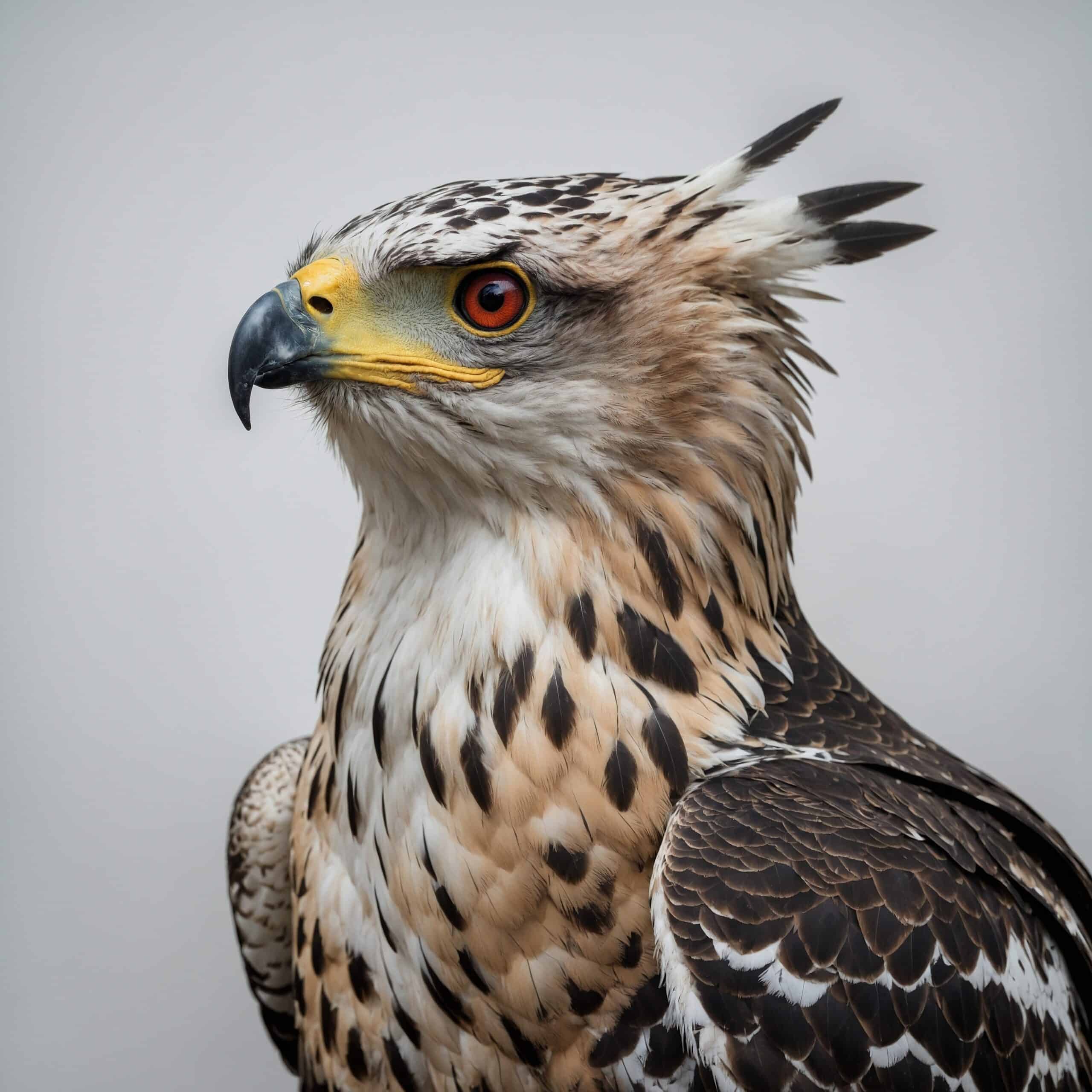
The African Crowned Eagle, often referred to as the “leopard of the air,” is one of the most powerful and striking birds of prey found in the dense forests of sub-Saharan Africa. This eagle is known for its incredible strength and ability to take down prey much larger than itself, including monkeys, antelope, and even small primates. The African Crowned Eagle is easily recognizable by its distinctive crown of feathers, which gives it a regal appearance, and its dark, barred plumage. With a wingspan of up to 6 feet and a weight of up to 10 pounds, this eagle is a formidable hunter, using its powerful talons to crush the skulls of its prey. Its haunting, high-pitched call echoes through the forest, adding to its mysterious and awe-inspiring presence. The African Crowned Eagle is highly adaptable, capable of thriving in a variety of habitats, from dense rainforests to open woodlands. However, this stunning bird of prey is also elusive and difficult to spot in the wild, making it a prized sighting for birdwatchers and nature enthusiasts. Conservation efforts are crucial to protect this magnificent eagle from habitat loss and human persecution.
Blakiston’s Fish Owl
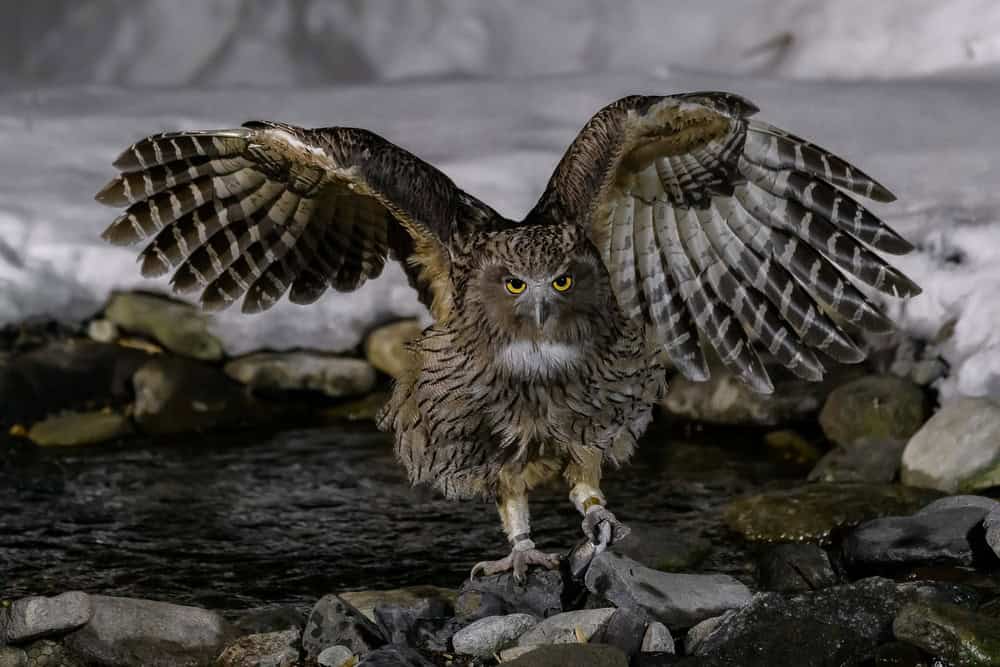
Blakiston’s Fish Owl is one of the largest and most stunning owls in the world, known for its impressive size and unique adaptations for hunting in aquatic environments. Found in the forests and rivers of Russia, Japan, and parts of China, this owl has a wingspan of up to 6.5 feet and can weigh up to 10 pounds. Its plumage is a striking mix of brown and white, with a distinctive “ear” tuft on each side of its head and large, expressive yellow eyes. Blakiston’s Fish Owl is specially adapted for hunting fish, its primary diet, and can be seen swooping down to snatch fish from rivers and streams with its powerful talons. This owl’s haunting calls, often heard echoing through the forest at night, add to its mysterious and captivating presence. Despite its large size, Blakiston’s Fish Owl is a highly secretive and elusive bird, making it a rare and prized sighting in the wild. Unfortunately, this stunning owl is considered endangered due to habitat loss, pollution, and declining fish populations, making conservation efforts crucial to ensure its survival.
Eurasian Eagle Owl
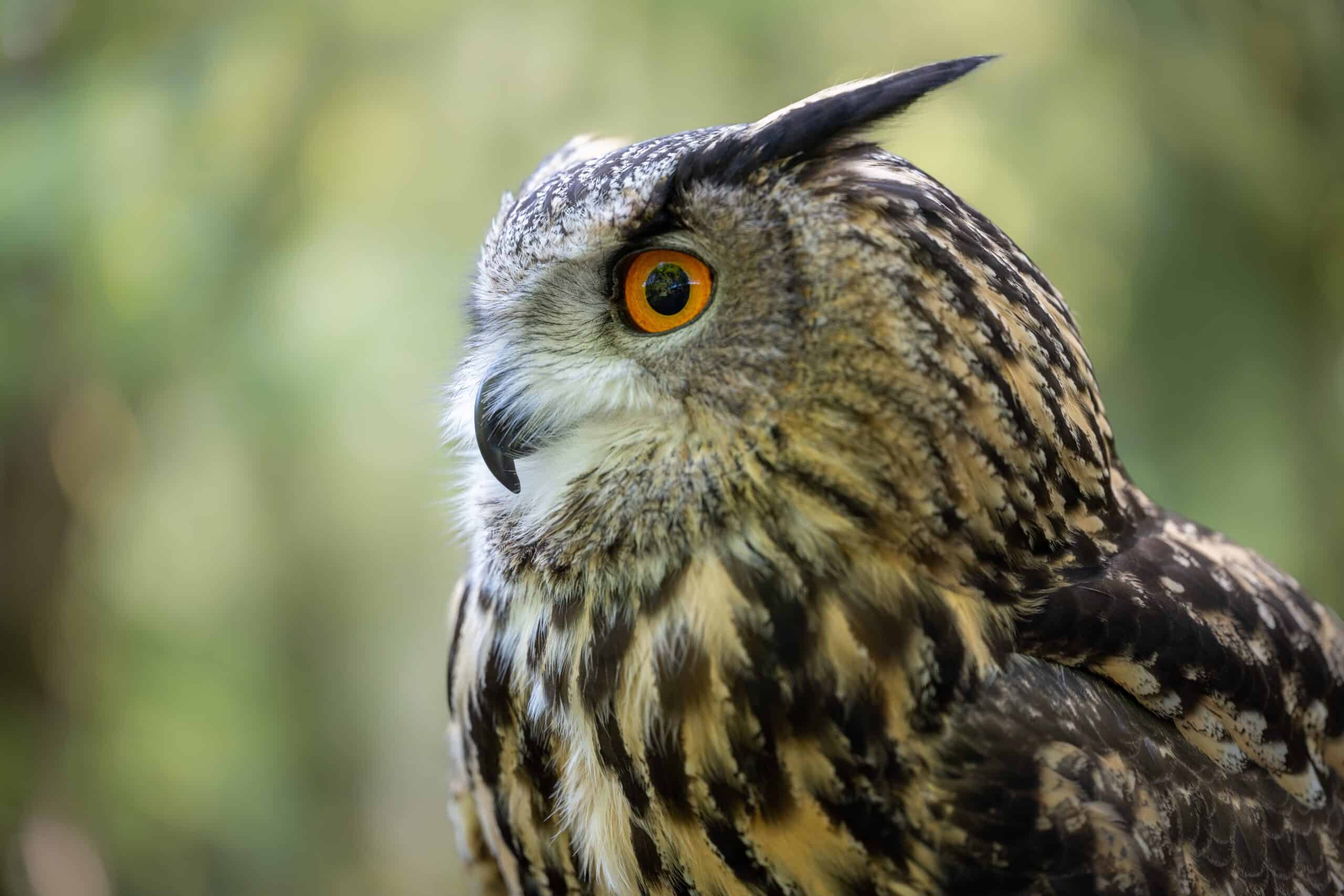
The Eurasian Eagle Owl is one of the largest and most powerful owls in the world, known for its striking appearance and formidable hunting skills. Found across Europe and Asia, this owl is easily recognizable by its large size, with a wingspan of up to 6.5 feet and a weight of up to 10 pounds. Its plumage is a rich mix of brown, black, and white, providing excellent camouflage in its forested habitat. The Eurasian Eagle Owl’s most distinctive features are its bright orange eyes and long, prominent ear tufts, which give it a fierce and intimidating look. This owl is a top predator in its ecosystem, preying on a wide range of animals, including rodents, rabbits, and even other birds of prey. Its powerful talons and silent flight make it a highly efficient hunter, capable of taking down prey much larger than itself. The Eurasian Eagle Owl’s haunting hoots can be heard echoing through the forest at night, adding to its mysterious and awe-inspiring presence. Despite its widespread range, this stunning owl is threatened by habitat loss and human persecution, making conservation efforts essential to protect this magnificent bird.
Secretary Bird

The Secretary Bird is one of the most unique and stunning birds of prey, known for its distinctive appearance and remarkable hunting abilities. Found in the grasslands and savannas of sub-Saharan Africa, this bird stands out with its long legs, tall stature, and striking black and white plumage. The Secretary Bird’s most recognizable feature is the crest of long, black feathers that adorn its head, giving it a somewhat regal and enigmatic appearance. With a height of up to 4 feet and a wingspan of 7 feet, this bird is a formidable predator, using its powerful legs to deliver swift, deadly kicks to its prey, which includes snakes, rodents, and insects. The Secretary Bird’s hunting technique is truly unique among birds of prey, as it often hunts on foot, stalking its prey through the grasslands with remarkable speed and agility. Despite its terrestrial habits, the Secretary Bird is also a strong flier, capable of soaring high above its territory. This stunning bird’s elegant appearance and unique behavior make it a favorite among birdwatchers and nature enthusiasts, and its presence in the wild is a true testament to the diversity and beauty of the natural world.
Peregrine Falcon
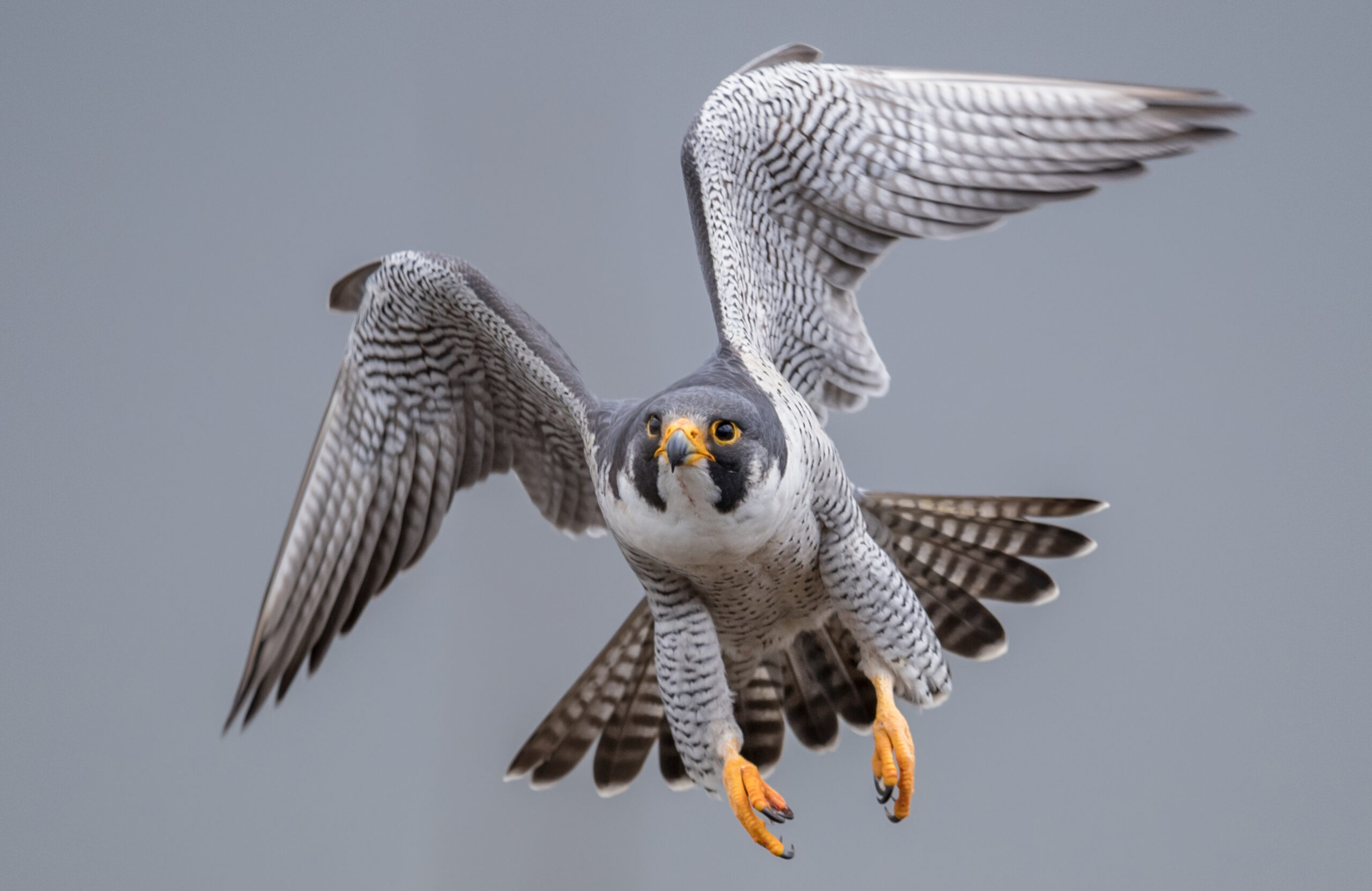
The Peregrine Falcon is renowned as the fastest animal on the planet, reaching dive speeds of over 240 miles per hour when hunting. This incredible speed, coupled with its sharp talons and powerful beak, makes the Peregrine Falcon one of the most efficient and deadly predators in the bird world. Found on every continent except Antarctica, the Peregrine Falcon is a truly global species, thriving in a wide range of environments from urban skyscrapers to remote mountain ranges. The falcon’s plumage is a striking blend of blue-gray and white, with a distinctive black “moustache” mark on its face. Its keen eyesight allows it to spot prey from great distances, and its streamlined body is perfectly adapted for high-speed pursuits. The Peregrine Falcon’s hunting technique involves a dramatic high-altitude stoop, during which it tucks in its wings and dives at incredible speeds to strike unsuspecting birds in mid-air. This breathtaking display of speed and precision makes the Peregrine Falcon one of the most stunning birds of prey in the world. Despite facing population declines in the mid-20th century due to pesticide use, conservation efforts have helped the Peregrine Falcon make a remarkable recovery, allowing this stunning bird to continue to thrive in the wild.
Red-tailed Hawk
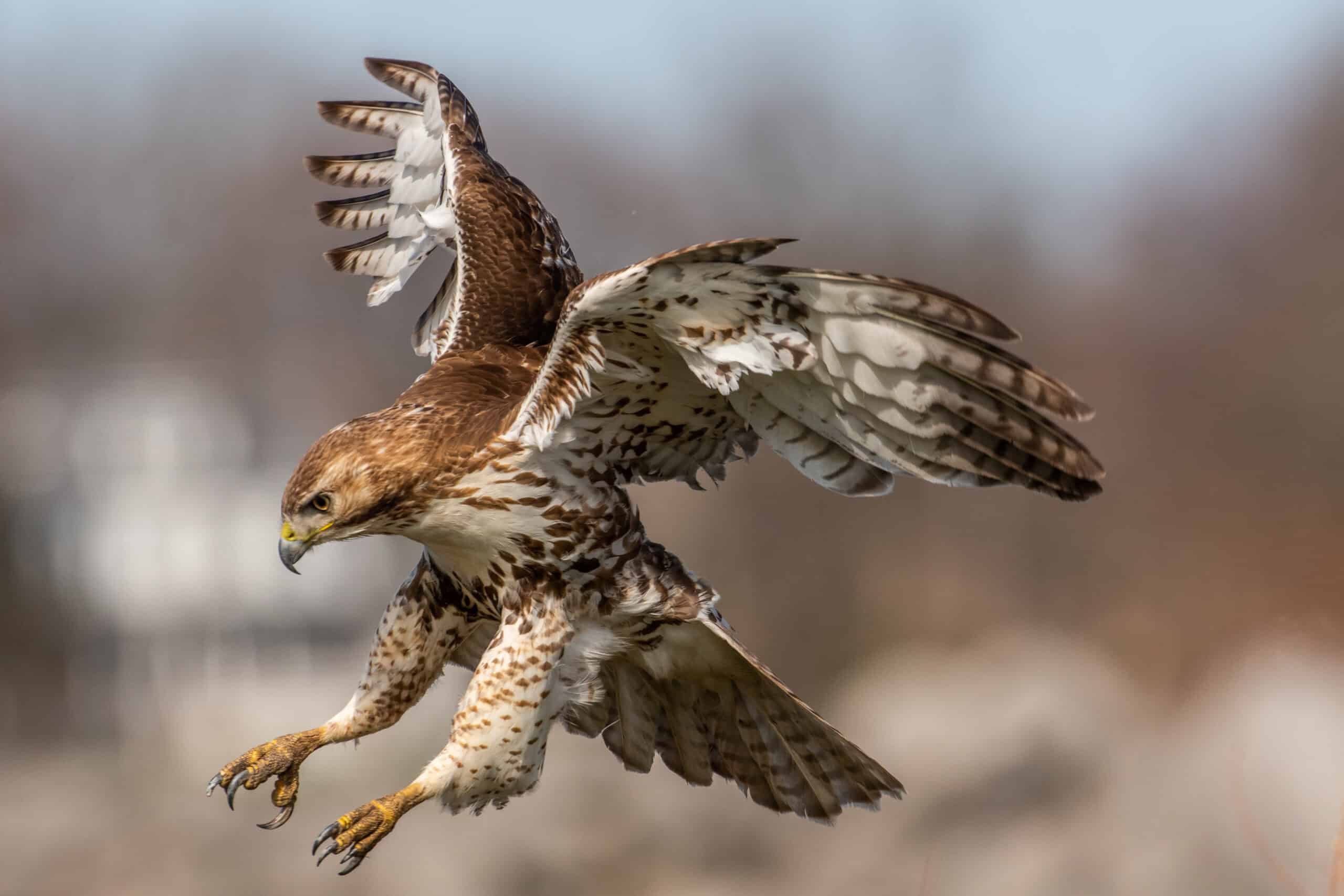
The Red-tailed Hawk is one of the most common and easily recognized birds of prey in North America, known for its distinctive red tail and powerful build. With a wingspan of up to 4.8 feet and a weight of up to 3.5 pounds, the Red-tailed Hawk is a formidable hunter, preying on a wide range of animals, including rodents, rabbits, and other small mammals. Its plumage varies in color, but the characteristic reddish-brown tail is a key identifier. The Red-tailed Hawk’s keen eyesight allows it to spot prey from great distances, and its powerful talons and beak are perfectly adapted for capturing and killing its prey. This hawk is often seen soaring high above open fields and woodlands, using thermal currents to glide effortlessly through the sky. Its piercing, raspy call is a familiar sound in many parts of North America and is often used in movies to represent any bird of prey. The Red-tailed Hawk’s adaptability and wide range make it one of the most successful raptors in the wild, and its striking appearance and hunting prowess make it a truly stunning bird of prey.
Snowy Owl
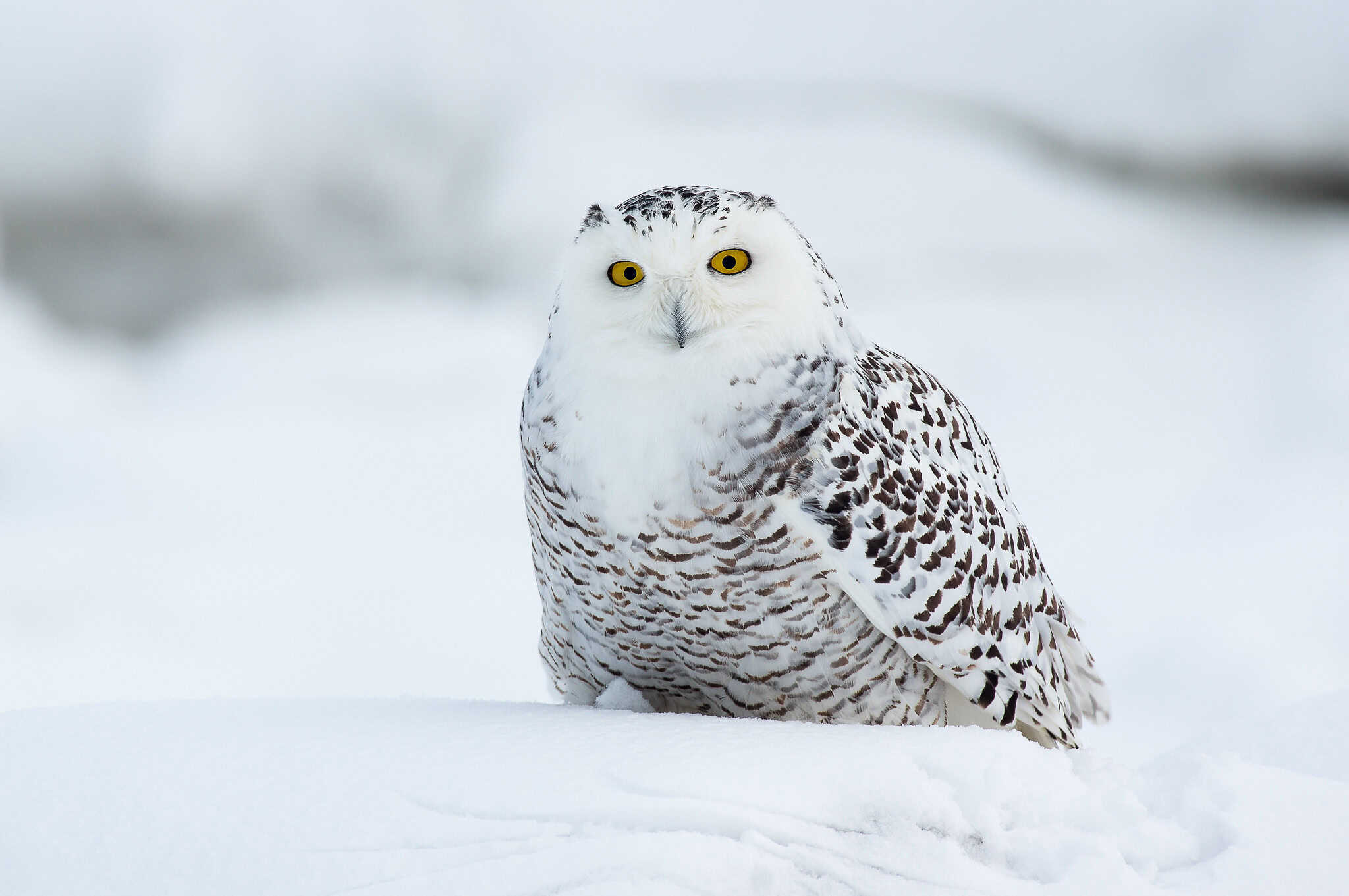
The Snowy Owl is one of the most stunning and iconic birds of prey, known for its striking white plumage and piercing yellow eyes. Native to the Arctic regions of North America and Eurasia, the Snowy Owl is perfectly adapted to life in the harsh, frozen tundra. Its thick feathers provide insulation against the cold, while its white coloration offers excellent camouflage against the snowy landscape. The Snowy Owl’s wingspan can reach up to 5 feet, and it can weigh up to 6.5 pounds, making it one of the largest owl species. This owl is a highly skilled hunter, preying on a variety of animals, including lemmings, rodents, and other small mammals. The Snowy Owl is also known for its unique behavior of being active during the day, unlike most other owl species, which are nocturnal. This diurnal behavior allows the Snowy Owl to take advantage of the continuous daylight during the Arctic summer. The Snowy Owl’s majestic appearance and elusive nature make it a highly sought-after sighting for birdwatchers and nature enthusiasts, and its presence in the wild is a true testament to the beauty and adaptability of the natural world.
Lappet-faced Vulture
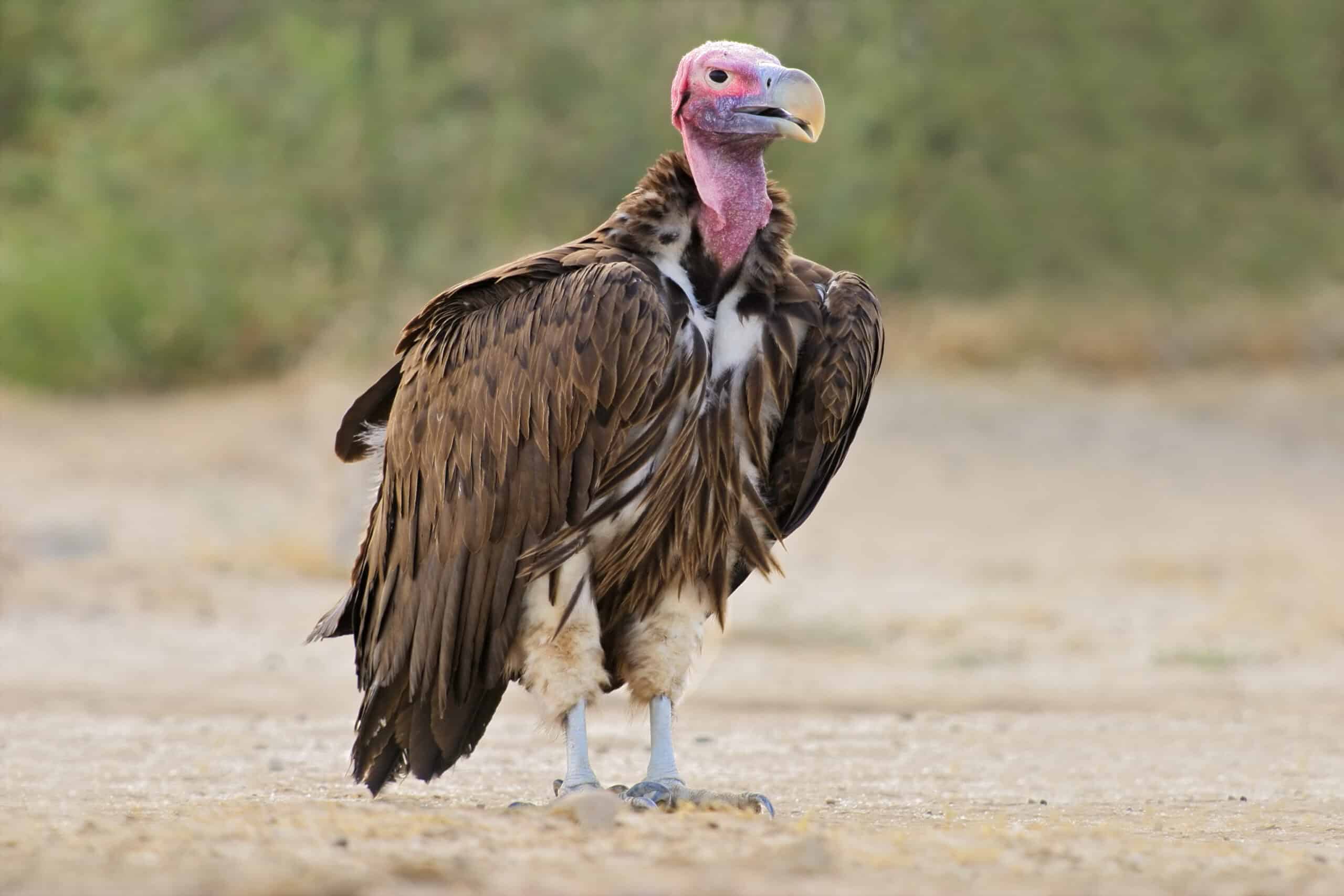
The Lappet-faced Vulture is one of the largest and most powerful vultures in the world, known for its striking appearance and formidable presence. Native to the savannas and arid regions of Africa and the Arabian Peninsula, this vulture is easily recognizable by its large size, with a wingspan of up to 9.5 feet and a weight of up to 20 pounds. Its distinctive features include a bald, pinkish-red head surrounded by loose folds of skin, known as “lappets,” and a powerful, hooked beak that is perfectly adapted for tearing through tough animal hides. The Lappet-faced Vulture is a dominant scavenger, often taking the lead at carcasses and driving away smaller vultures and other scavengers with its sheer size and strength. This vulture’s impressive flight abilities allow it to soar high above the savannas, using its keen eyesight to spot carrion from great distances. Despite its fearsome reputation, the Lappet-faced Vulture plays a crucial role in its ecosystem, helping to clean up animal remains and prevent the spread of disease. However, this stunning bird is threatened by habitat loss, poisoning, and human persecution, making conservation efforts essential to protect this magnificent species.
Bald Eagle
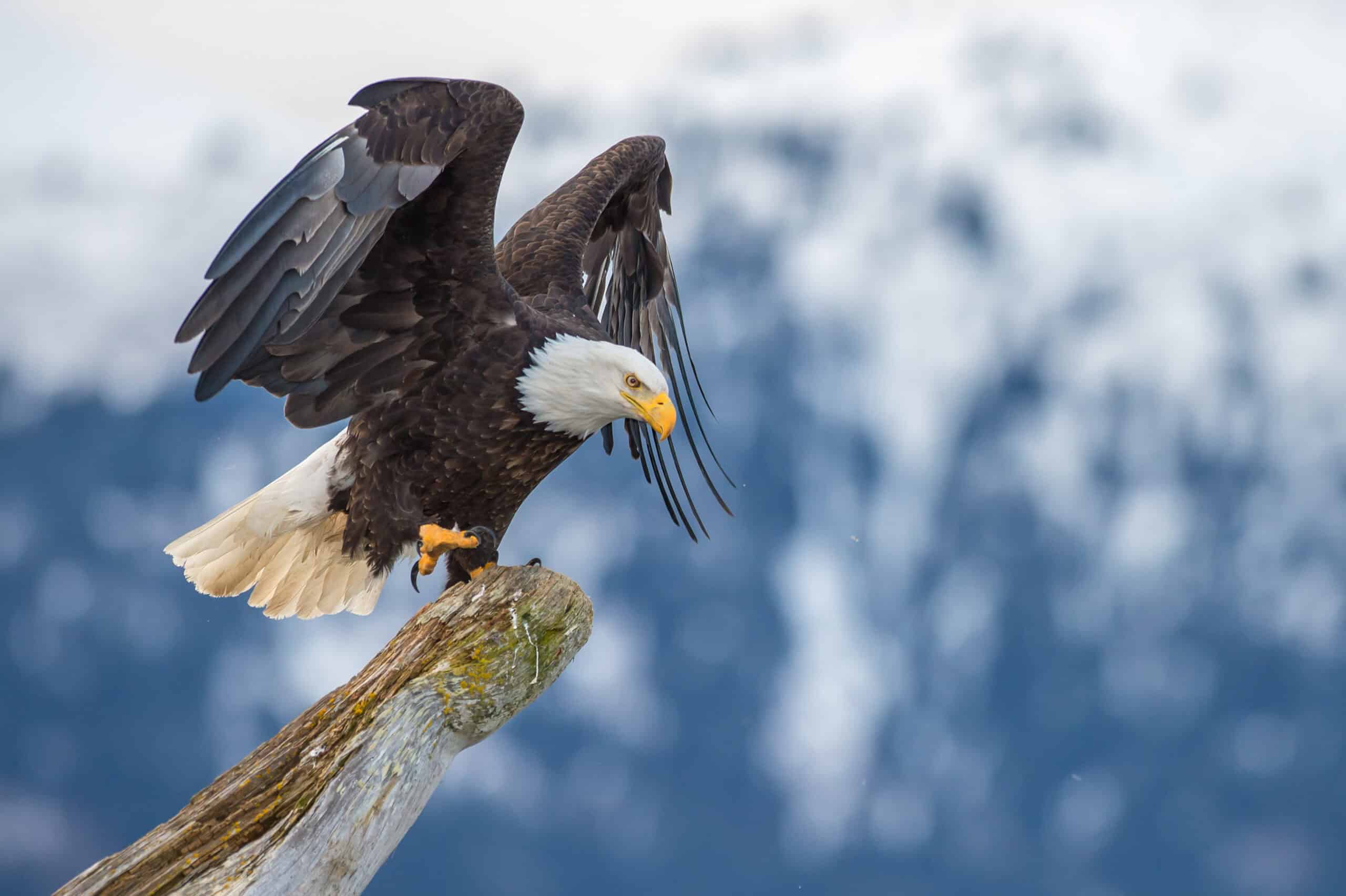
The Bald Eagle is one of the most iconic and stunning birds of prey, known for its majestic appearance and symbolic significance. Native to North America, the Bald Eagle is easily recognizable by its striking white head and tail, contrasting with its dark brown body and wings. With a wingspan of up to 7.5 feet and a weight of up to 14 pounds, the Bald Eagle is a powerful and agile flier, capable of soaring to great heights in search of food. This eagle’s sharp talons and hooked beak are perfectly adapted for catching fish, its primary diet, as well as small mammals and birds. The Bald Eagle’s piercing yellow eyes and strong, curved beak give it a fierce and regal appearance, making it a symbol of strength and freedom in the United States. The Bald Eagle’s impressive nest-building skills are also noteworthy, with some nests reaching up to 10 feet in diameter and weighing over a ton. Despite facing population declines in the mid-20th century due to pesticide use, conservation efforts have helped the Bald Eagle make a remarkable recovery, and it is now a protected species across much of its range. This stunning bird’s presence in the wild is a true testament to the resilience and beauty of nature.
This article originally appeared on Rarest.org.
More from Rarest.org

Coins have been a fundamental part of human commerce for centuries. The design and symbolism of these small pieces of metal tell stories about the cultures that minted them. Read more.
8 Most Expensive Dishes Ever Served at Restaurants

Indulging in luxurious dining experiences can sometimes come with a staggering price tag. For those who seek the finest in culinary craftsmanship, certain dishes stand out as the epitome of opulence. Read more.
15 Most Sought-After Foliage Plants for Interior Design

Foliage plants have become a staple in interior design, offering both aesthetic appeal and health benefits. These versatile plants add life to any space, from lush, tropical vibes to sleek, modern touches. Read more.
